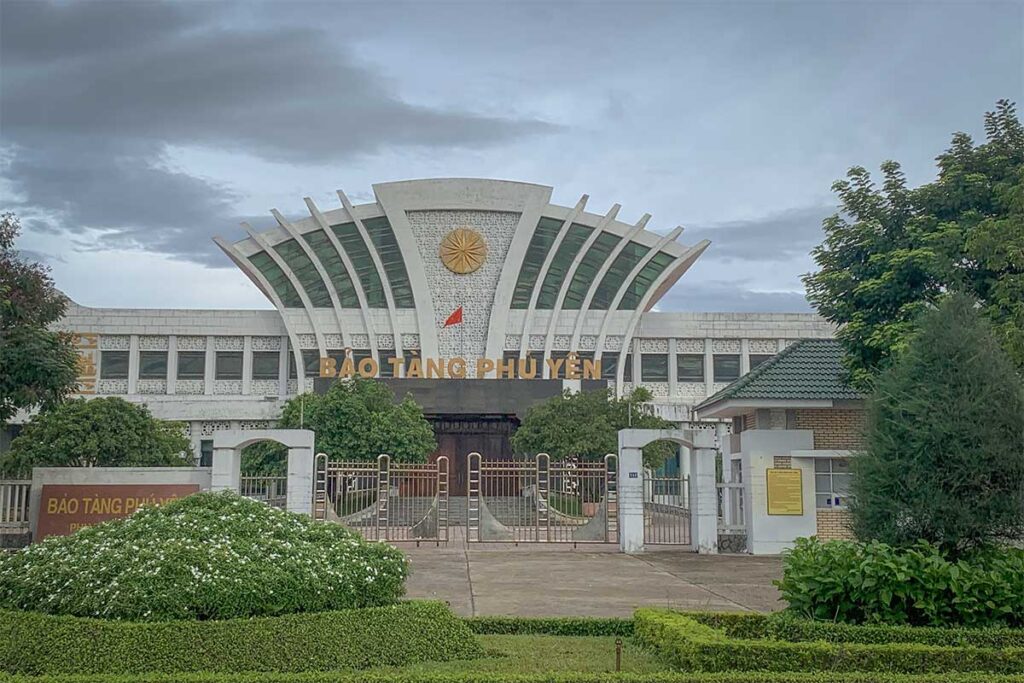Where is Phu Yen Museum about?
Phu Yen Museum is located at 151 Tran Phu Street in the center of Tuy Hoa city. Inside, it holds several thousand artifacts (sources range from about 3,000 to over 6,000), covering everything from prehistoric stone tools and Cham relics to war memorabilia and everyday objects of ethnic minority life.
The building itself is designed with symbolism, modeled after the hat of the Hung Kings and decorated with bronze drum motifs. Like most provincial museums in Vietnam, it’s modest compared to the big institutions in Hanoi or Ho Chi Minh City, but it remains part of the cultural landscape and offers a glimpse into the history of the province.
Highlights of visiting Phu Yen Museum
You won’t need long here — most people spend about 30 to 60 minutes exploring. The building itself and the outdoor displays tend to leave a stronger impression than the indoor collections. Inside, the museum focuses almost entirely on objects, with little explanation and labels mostly in Vietnamese, so it works best if you go in with modest expectations.
1. Architecture & Building design
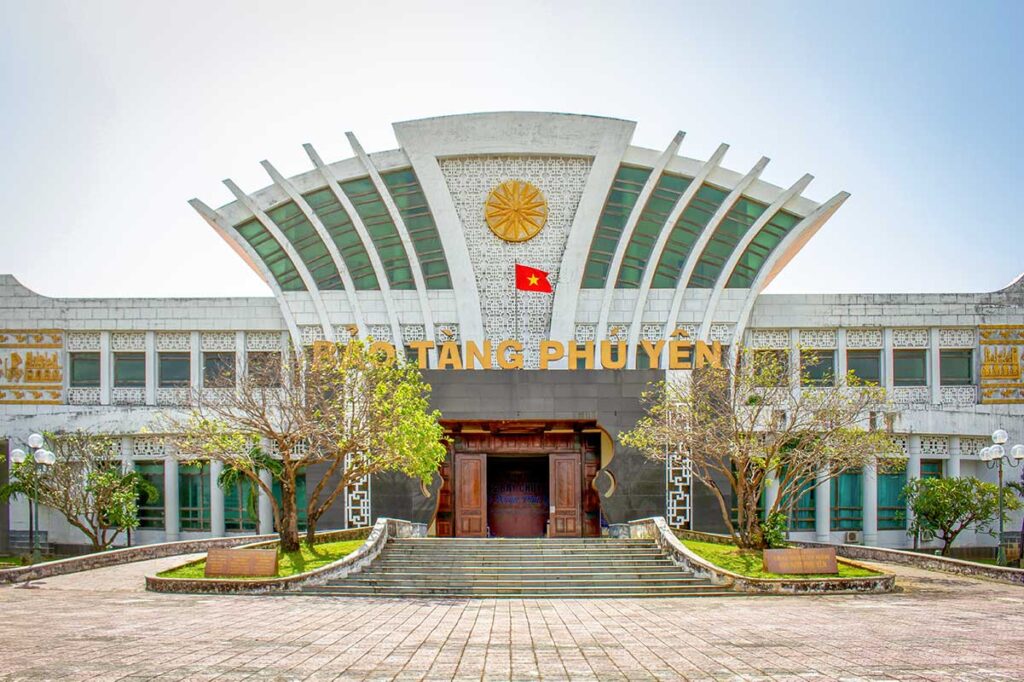
The museum sits on a 3-hectare site and stands out for its striking, modern design. The main building was inspired by the hat of the Hung Kings, with bronze drum and Lac bird motifs incorporated into its decoration. Even if the exhibits feel limited, the architecture is worth appreciating on its own.
2. Cham Culture & Archaeological Finds

Among the most significant displays are Cham relics unearthed in the Dong Mieu area, including a linga, yoni, stone carvings, and architectural remains of Cham towers. A distinctive feature of Phu Yen’s Cham towers is that they were built entirely of brick, unlike the stone-brick combinations found elsewhere. These exhibits link to the Thanh Ho Archaeological Site and to Nhan Tower in Tuy Hoa, connecting the museum’s artifacts to real-world sites you can still visit.
3. Prehistoric & Dai Viet Era Artifacts

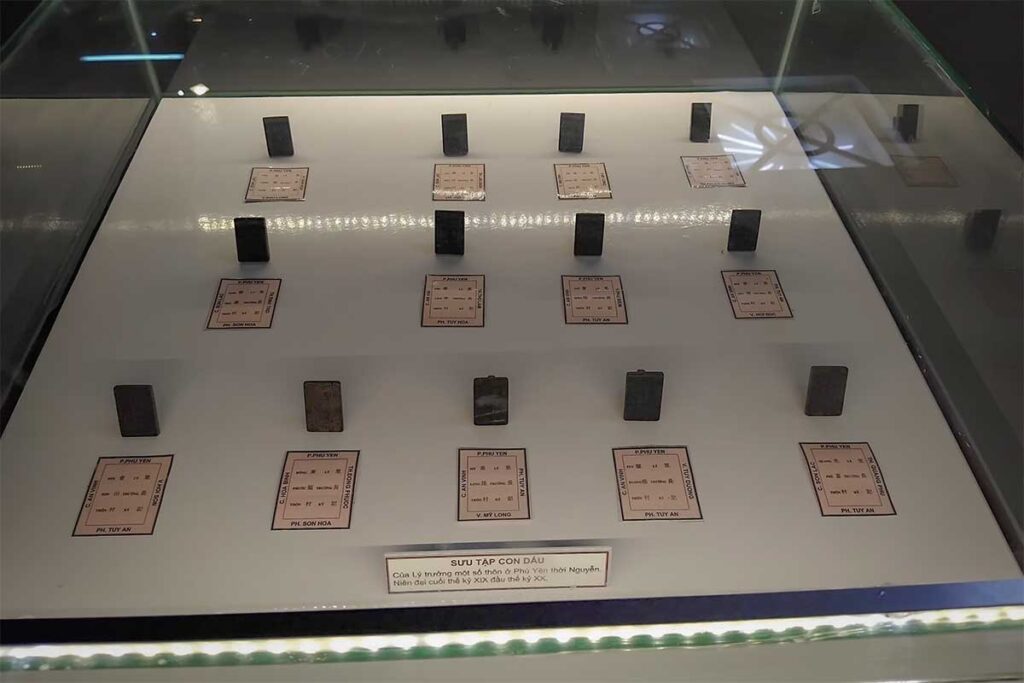
The museum also houses stone tools from the Hoa Binh culture and Dong Son bronze drums dating back more than 2,000 years. Coins, seals, and dynastic regalia from the Dai Viet period are on display, alongside unusual stone musical instruments that are unique to central Vietnam.
4. Quang Duc Ceramics

One section highlights Quang Duc pottery, a craft that flourished in central Vietnam during the 18th and 19th centuries. These ceramics sometimes feature more prominently in temporary or themed exhibitions, making them one of the museum’s stronger cultural draws when showcased well.
5. War & Revolutionary History
A large portion of the museum is devoted to resistance and independence struggles. You’ll find weapons, uniforms, propaganda tools, and personal belongings of soldiers. Outside, the Ministry of Defense has donated military equipment including tanks, artillery, and an aircraft — these are often the most photographed exhibits.
6. Ethnic life & Everyday culture
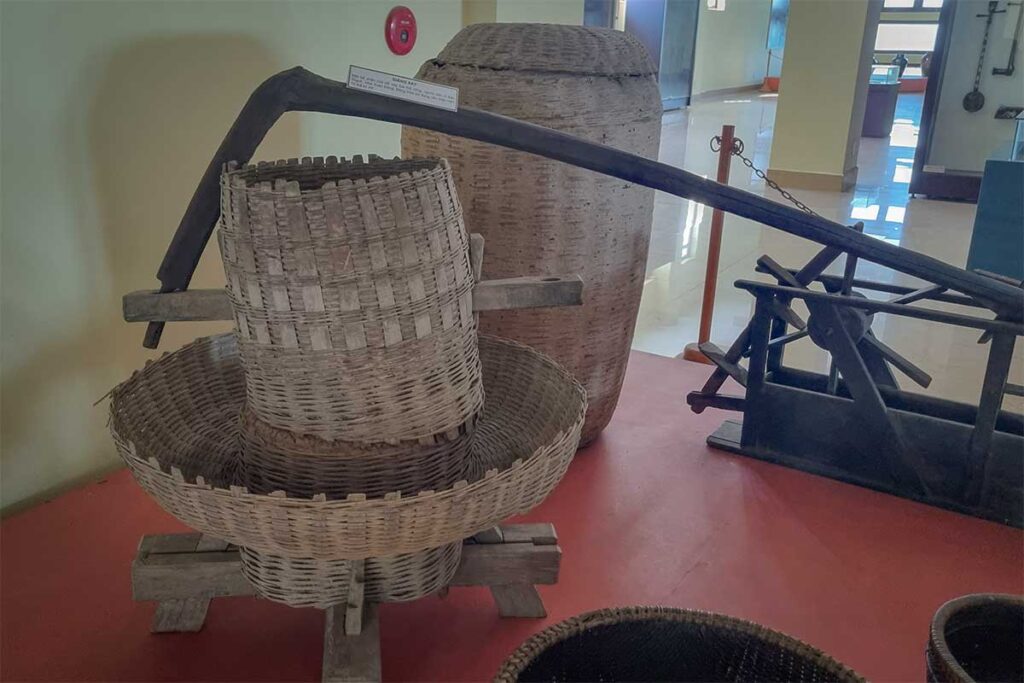
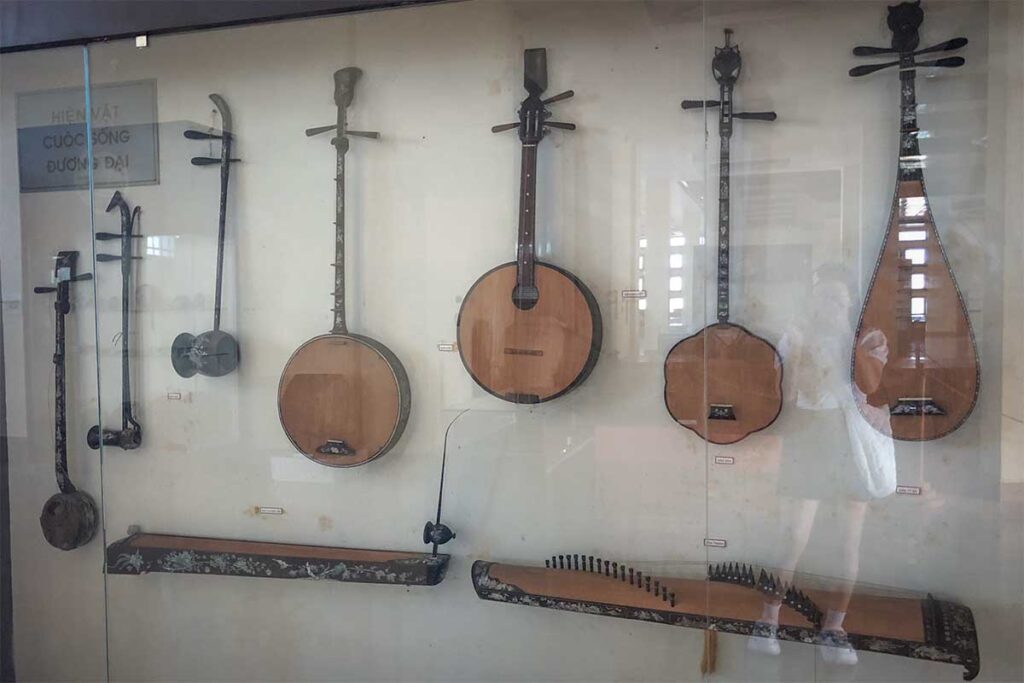
Displays of agricultural tools, baskets, gongs, water gourds, and wine jars give a glimpse into the daily life of Phu Yen’s ethnic minorities. As with most of the museum, the items are presented with little context, so it’s more about seeing objects than learning in depth.
7. Outdoor exhibition area
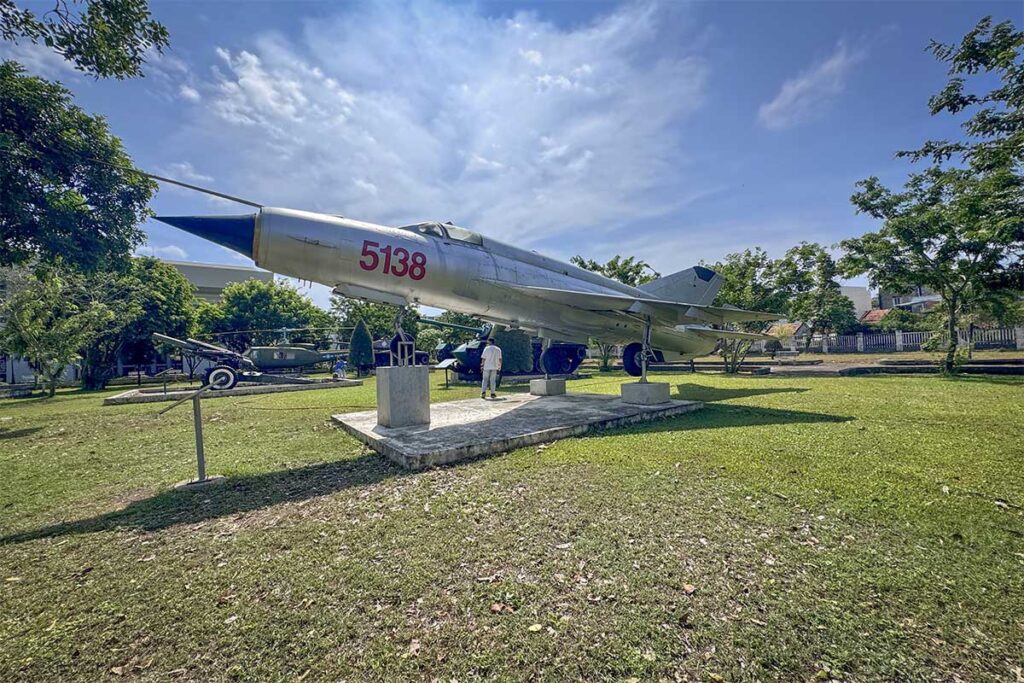
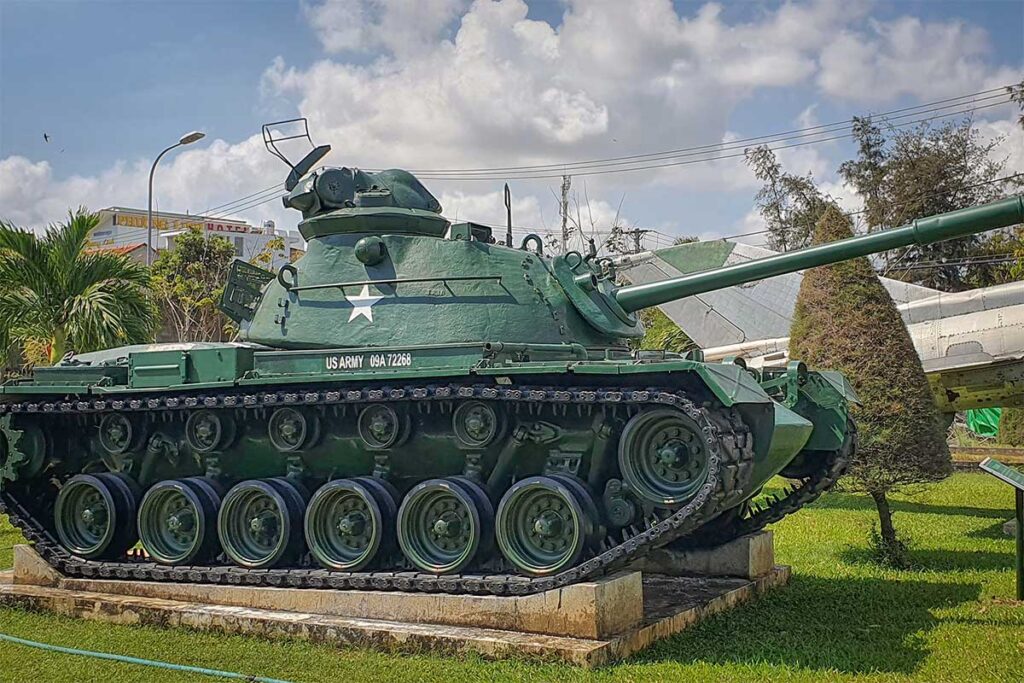
The museum’s 4,000 m² courtyard is home to large military equipment, including tanks, planes, and cannons. The open space is also occasionally used for intangible heritage performances and art shows, though these are not daily occurrences. For most visitors, the outdoor yard is a quick but memorable part of the stop.
Location & Getting there
Where is Phu Yen Museum?
Phu Yen Museum is located right in the center of Tuy Hoa, the provincial capital. You’ll find it on Tran Phu Street, close to hotels, restaurants, and the main city landmarks. Tuy Hoa itself is easy to reach — there’s an airport with daily flights from Hanoi and Ho Chi Minh City, a train station on the North–South railway, and National Route 1 runs directly through the city.
Taxi or Walking
If you’re staying in central Tuy Hoa, the museum is only about 5–10 minutes away by taxi or motorbike. Walking is also possible if your hotel is nearby on Tran Phu Street, making it a simple stop to add into a city stroll.
Practical visiting information & Travel Tips
Entrance & Opening hours
Entry to Phu Yen Museum is free. Official hours are from 08:00 to 17:00. It’s best to double-check locally as online listings are sometimes inaccurate.
Time needed
Most visitors find that 30 to 60 minutes is enough to see the museum, including a quick look at the outdoor courtyard.
Facilities & Reality check
Facilities are basic. Toilets have been reported as dirty or poorly lit, and there is no café or shop inside. Exhibits are sometimes dusty and lighting can be dim, so don’t expect polished presentation.
Language & Signage
Labels are almost entirely in Vietnamese with little or no English explanation. If you want to understand more, consider hiring a local guide or use a translation app to get context.
Visitor tips
Think of this museum as a rainy-day option or a short stop while in Tuy Hoa, rather than a must-see highlight. Go in with modest expectations and focus on the parts that interest you most — whether that’s the Cham relics, Quang Duc ceramics, or the outdoor military displays.
Is Phu Yen Museum worth visiting?
For most travelers, the honest answer is no. Phu Yen Museum is not a polished or in-depth cultural experience, and it won’t add much to your trip if you’re mainly here for the coastline, fishing villages, and scenery. The collections feel sparse and lack context, with no English explanations and facilities that are far from international standard.
That said, there are a few exceptions. If you’re staying in Tuy Hoa for more than a day or two, have a particular interest in Cham artifacts that add depth to visiting the region’s towers, or simply need an indoor option on a rainy day, then it can be worth a quick stop. Otherwise, you won’t be missing much by skipping it.
